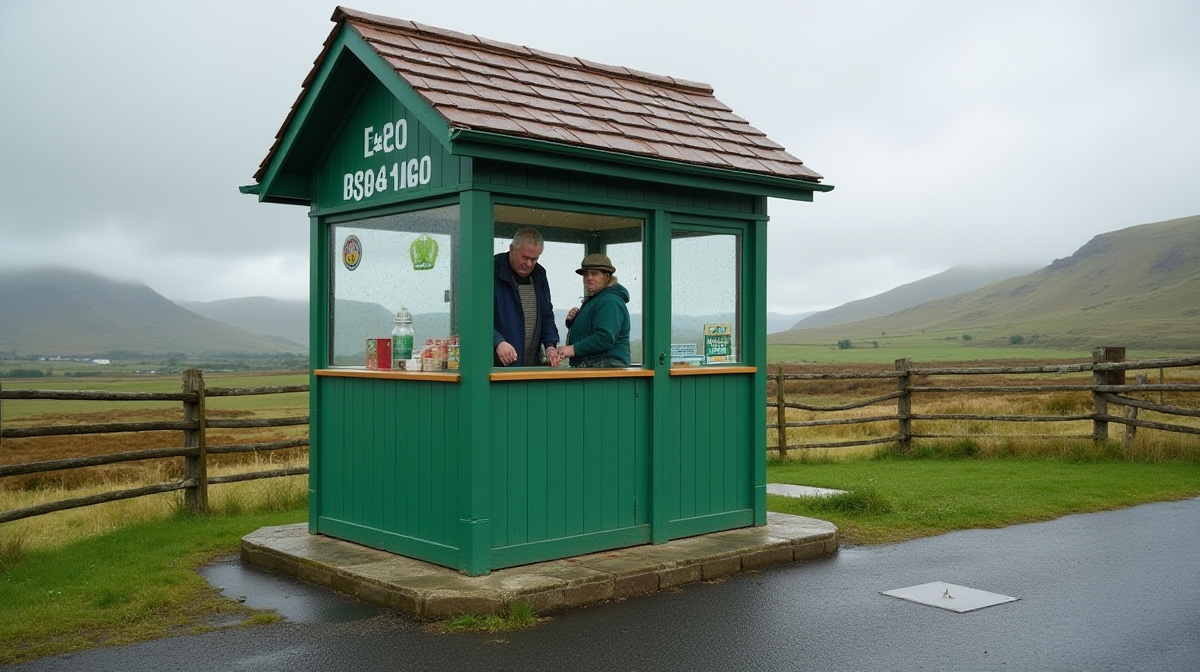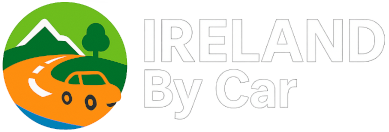Introduction
Whether you’re bobbing along the emerald landscapes of Ireland for the first time or a seasoned local, navigating toll roads can be a cause for anxiety or confusion. With the mix of conventional toll booths and barrierless tolls like the M50, knowing when, where, and how to pay can feel like a jigsaw puzzle. Failure to square this invoice promptly or correctly can leave a bitter aftertaste in your travel memories, topping off with a hefty penalty. But don’t let these tricky tracks antagonize your thrilling ride across Ireland. We’re here to take the wheel and guide you through the ins and outs of toll roads in Ireland. This definitive insider’s guide will expound the locations, costs and payment processes of tolls in Ireland – including the singular M50 barrierless toll. Leave your worries by the curb and familiarize yourself with the toll roads because a smooth and stress-free journey awaits you!
Overview of Toll Roads in Ireland
Ireland has a comprehensive toll road network, making it quick and easy to navigate the whole country by road. However, the system can be somewhat daunting if you’re not familiar with it. Here’s a simple guide to understanding and navigating toll roads in Ireland.
Toll Roads in Ireland
Ireland has eleven toll roads in total, including two tunnels and a bridge. Notably, these tolls are situated along the busiest roads of Ireland such as the M1, M3, M4, M50, and the Dublin Port Tunnel. An interactive map on eToll.ie provides the location of each toll plaza.
Payment Methods
Each toll plaza, except for the M50 toll, houses manned and automated payment booths. Cash, credit and debit cards are accepted at the booths. However, my learning experience revealed that keeping exact change always speeds up the payment process.
For the M50 toll, a barrier-free system was introduced in 2008 to reduce traffic congestion. This means, there are no toll booths and transactions are automatically recorded via number plate recognition systems.
Remembering the M50 experience, I set up an eToll account, which allowed me to pay my M50 tolls automatically. Talk about something learned! The eTolls can also be paid using the easytrip or eFlow registered account, through the toll operator’s website, Payzone outlets, or by phone within specified time limits.
Prices
Toll prices in Ireland vary depending on the vehicle type and the toll location. For cars, they range from €1.40 at the East Link Toll Bridge (Tom Clarke Bridge) and go up to €10.00 for the Dublin Port Tunnel during peak hours. Remember though, toll prices are subject to change and it’s always a good idea to check the most up-to-date prices on the Toll.ie website.
Failure to Pay the Toll
Missed payments on the M50 toll will lead to penalties. A €3.10 standard toll charge applies if it’s paid before 8 pm the next day. If not paid, a €3.00 penalty is added. If still unpaid after 14 days, another additional €41 penalty is levied, climbing further to €103 if unpaid after 56 days. I learnt the hard way, evading tolls is not a wise idea in Ireland!
In essence, Ireland’s diverse range of payment methods and strategic placement of tolls make road travel quite efficient. The M50 barrier-free system especially, has reduced congestion considerably, a revolution in Irish toll history. Also, pre-emptive payments can save you a lot of trouble, a lesson etched into my memory after experiencing the penalties first hand.
Keep in mind that the best way to navigate through Ireland’s toll road system is to stay updated, plan ahead and have your payment sorted, making your journey all the more seamless. Happy motoring!

Locations of Toll Roads Across the Country
The emerald isle of Ireland is beautifully interlaced with a network of roads and highways, including toll roads, which ensure efficient travel throughout. This section provides detailed information on the locations of toll roads across the country, the prices you can expect to pay, and how payments are typically made, including the M50 barrier-less toll.
Toll Locations Across Ireland
Noting the places where you’re likely to encounter tolls can save time and prevent confusion on your journey. Ten main toll points are scattered around the country, most notably on the M1, M3, M4, M6, M7/M8, M50, N6, N8, N25 and the Dublin Port Tunnel. They are strategically positioned to facilitate the funding of these critical infrastructure projects.
M50 Barrier-Less Toll
The M50 is a unique case. Rather than using a traditional toll booth system, this highway employs a barrier-less tolling method – there are no booths to stop at or coins to throw. Electronic cameras installed over the highways record the license plate numbers of cars passing the tolling point (located between Junction 6 and Junction 7) and charge vehicle owners accordingly.
How to Pay
There are a few ways to pay for tolls in Ireland.
- At the toll booth: Most toll roads have pay zones where drivers can pay by cash or credit/debit cards.
- Online: The M50 toll can be paid online on the eFlow website . This is also a useful option if the toll booth was unmanned or you didn’t have the chance to pay immediately.
- Electronic tags: Frequent drivers can use electronic tags that allow for automatic payment, saving time, and hassle.
Prices and Penalties
The cost of tolls varies depending on the type of vehicle and the road. You can expect to pay anywhere from €1.40 for motorcycles up to €5.80 for cars on most toll roads, with the M50 taking the lion’s share of up to €6.60 for unregistered vehicles. Prices are kept up-to-date on the Transport Infrastructure Ireland website.
Careful! Failure to Pay Comes with Consequences
Ignoring tolls can come with significant penalties. Allow me to share a personal experience. I once had forgotten to pay the M50 toll and was hit with a €3 penalty for late payment. If I had not paid it for 14 days after the due date, the toll fee would have gone up to €44.20! So, do remember to pay within the due timeline to avoid unnecessary charges.
In conclusion, while tolls might seem a hassle initially, they play a significant role in maintaining the beautiful roads we use daily. Our journey upon them becomes much smoother once we become savvy to their workings and locations. Ensuring prompt payment not only supports this system but also saves us from any penalties or late fees.

Understanding Tolls Costs in Ireland
In Ireland, navigating through toll roads can initially seem a daunting task, especially for those who are unaccustomed to the toll systems. However, with a proper understanding of the locations, prices and payment methods of these tolls, one can make their journey in Ireland more convenient and stress-free.
Locations of Toll Roads
Ireland is home to several toll roads, bridges, and tunnels, such as the M50 motorway, East Link Toll Bridge and the Dublin Tunnel, amongst others. All these routes are part and parcel of the Irish travel landscape, and it’s likely you’ll encounter one or more of them during your travels. Essentially, if you are driving through one of the main arterial routes leading to or across Dublin, chances are high that you will come across a toll station.
Once, during a road trip to Giant’s Causeway, I missed a turn and ended up paying an unexpected toll on M1. It’s one of the classic mistakes that I learned my lesson from – Always plan your route in advance!
Understanding the Costs
The costs of the tolls vary. They are primarily based on the type of vehicle, the time of day, and the road itself. For instance, eToll.ie presents a comprehensive list of the costs associated with various vehicles and roads. Prices range from €1.90 for motorcycles to €5.80 for cars on the M50. To add to that, the M50 toll is an unbarriered toll, operating on a system called barrier-free tolling.
As a reference point, during my time driving in Ireland, a round trip across the country on different toll roads cost me approximately €20. It’s a valuable insight to keep in mind while budgeting for a road trip in Ireland.
Payment options
Fear not if you are not carrying change – Ireland has a variety of ways for you to pay your toll. In addition to cash payments, most tolls accept credit and debit cards. There are also pre-paid options and electronic tags facilitating automatic payments.
For the barrier-free M50 toll, it operates on a ‘pay-as-you-go’ basis. It captures a photo of your number plate and sends a bill in the post. You can also pay online, in select retail outlets, or over the phone within a certain time frame, as conveyed by the eFlow.ie website. Failure to pay the M50 tolls can result in additional penalty charges, something I learned the hard way when I initially overlooked the payment time limit.
Pivotal Lessons
The most important lesson I learned from my experiences with the Irish tolls is the importance of preparation. Investigate your route, familiarize yourself with the toll prices, and decide on your preferred payment method before you venture on your journey.
With proper knowledge and preparation, tolls need not be a hindrance but simply a part of the driving experience in Ireland. Safe travels!
Demystifying the M50 Barrierless Toll Payment Process
In 2008, Ireland introduced the M50 barrierless toll system, a revolutionary move to reduce traffic congestion. The aim was to modernise the method of toll collection, making the process smoother for road users.
Under the Spotlight: M50 Barrierless Toll Payment Process
The M50 toll is barrier-free and uses video and sensor technology to capture number plate details automatically to determine the toll fee due. It’s worth noting that there’s no facility to pay at the toll – payment is made via a toll payment provider or online, over the phone, or at various Payzone outlets.
Here’s a simple breakdown of how the process works:
- As you drive through: When a vehicle passes through the toll, registration details are electronically registered.
- Payment options: Payment can be made in advance or by 8 pm the next day following the journey. The easiest way to pay is through eFlow, the main payment processor for this toll.
- Unregistered users: For unregistered users, the toll fee is €3.10 for cars, rising to a maximum of €5.30 for larger vehicles. The good news is, you can register with eFlow and this drops to €2.10 and €3.30 respectively.
Pitfalls and Consequences
From my own bitter experience, I’d strongly advise against letting the 8 pm deadline slip past. Initially, I missed a payment deadline by a few hours and received a not-so-welcome €3 penalty, taking my toll fee up to a total of €6.10. After this incident, I started using eFlow’s pre-paid tag, providing peace of mind and preventing any additional penalties.
According to the Transport Infrastructure Ireland (TII), you could face a penalty of €103 (plus the original toll fee) if payment isn’t made within 56 days. In some cases where payment is not made within 70 days, legal action could result, which can increase the penalty to €144.70.
Navigating the Process
I found the eFlow registration process painless, quick, and efficient. They even offer a handy account management tool allowing you to track and manage payments and access your account history – a godsend for those like me who like to keep an eye on every penny!
While the M50 toll has played an integral role in improving traffic flow, the barrierless system can initially pose some teething issues for drivers not accustomed to it. However, once you understand the payment process and ensure payments are made timely, the experience can be relatively stress-free.
For further information about M50 tolls, visit the TII’s official site and the eFlow website.

Alternative Payment Methods for Toll Roads
If you plan on driving in Ireland, you’ll encounter toll roads – in fact, the National Roads Authority in Ireland operates 11 toll roads across the country, including the barrier-free M50. Luckily, there are several alternative payment methods for these tolls.
Prepaying Online
One of the most efficient ways to pay for tolls is to prepay online. This way, you can take care of costs ahead of time and avoid the stress of toll booths altogether. Plus, you can use pretty much any major credit or debit card, which provides a certain convenience level.
You can prepay for your toll at the eFlow website before your journey. Alternatively, if you’re taking the M50, prepayment is especially handy as there are no physical toll booths.
Electronic Tag Providers
Another popular method of toll payment is using an electronic tag. In my personal experience, it’s extremely seamless – the tag is detected and the toll amount is automatically deducted from a prepaid account as you drive through. This means there’s no anxiety about having exact change, or slowing your journey by waiting at a toll booth.
There are several electronic tag providers like eFlow, Easytrip and ParkMagic. Consider the locations you’ll be driving most and choose a provider that covers those areas.
Payzone outlets
If you’re someone who prefers physical cash transactions, paying at a Payzone outlet is an alternative option. The good news is that there are almost 2000 outlets in Ireland, they are easy to find and provide an alternative to online payments. I remember the time when I forgot to prepay my M50 toll, I was able to drive to the nearest Payzone outlet and pay cash without any difficulty.
Lessons Learned
Preparation is key when it comes to toll payments in Ireland. Like the one time I underestimated the importance of paying my M50 toll on time and had to pay a higher fine. Since then, I always remind myself of the golden rule: M50 tolls must be paid by 8pm the following day after your journey.
Conclusion
Driving through Ireland is a wonderful experience, but dealing with toll roads can be a bit overwhelming. However, with many payment options available, you can easily find one that suits your preferences. Whether you choose to prepay online, use an electronic tag, or pay at a Payzone outlet, being prepared will make your journey smoother.
You can find more information about each toll road, pricing and payment methods on the National Roads Authority website. Safe travels!
Consequences of Non-Payment: Late Fees and Penalties.
In Ireland, it’s common knowledge that paying toll fees on time is non-negotiable, but did you know that failure to do so can have serious consequences?
Understanding the Consequences of Non-Payment
Paying your toll fees on time is, of course, the ideal scenario. However, life happens and you may find yourself unable to pay on time or forget to do so. In such cases, the Transport Infrastructure Ireland imposes penalties for late or non-payment of tolls.
Late Fees
Typically, you have until 8 pm the following day to pay your toll fee after passing a toll point. Failure to do so will result in a late payment notice being sent to your registered address, which will include an additional late fee. Currently, the late fee for the M50 is €3.00, but it can vary across different toll points.
Unpaid Fees and Penalties
If the toll fee and the late fee are not paid within 14 days, an unpaid toll notice is issued. This notice will include the original toll fee, the late fee, and an additional penalty of €41.00. Trust me, I learned this the hard way when I was hit with such a notice after overlooking a toll payment on a busy road trip.
Legal Consequences
Beyond these fines, persistent non-payment can lead to serious legal consequences. A case can be brought against you by eFlow, the electronic toll collection operator, and if successful, it can result in a court judgment for payment along with additional legal costs.
Years back, a friend of mine ended up facing legal proceedings for accumulated unpaid tolls. Not only did he have to bear a hefty penalty but also had to deal with ensnaring legal hassles. It was only then we realized the importance of paying these toll fees timely. Thus, learn from our mistakes!
Impact on Credit Rating
Moreover, an unpaid court judgment can negatively impact your credit rating. A poor credit rating can make it more difficult to secure loans and may influence financial agreements such as mortgages or mobile phone contracts.
I can’t stress enough how crucial it is to pay your toll fees on time. While it might seem an insignificant matter at first, the consequences of non-payment can pile up, leading to unforeseen financial burdens and legal troubles.
For more information about penalties and practices in place, or to pay a toll, visit the Transport Infrastructure Ireland’s website here: www.tii.ie or eFlow’s official site: www.eflow.ie.

Conclusion
In conclusion, with the insider tips from our “Navigate Tricky Tracks” guide, traversing the toll roads in Ireland need not be a nerve-racking experience. The knowledge of where tolls are located, the costs involved, and an understanding of how to make payment, including the M50 barrierless toll, provides the confidence to take on the Irish roads with poise. It is our belief that, armed with this information, your journey across Ireland can be a seamless, exciting adventure rather than a complex riddle to be solved.
Don’t forget, being prepared is half the battle won. Always keep track of your tolls, ensure timely payments and don’t hesitate in reaching out for assistance when in doubt. To stay updated, we recommend bookmarking the Transport Infrastructure Ireland (TII) website. It provides a wealth of information on toll prices, payment methods, and penalty processes.
As daunting as it may seem at first, dealing with tolls is just another part of the driving experience in the picturesque lands of Ireland. Once you’ve mastered it, you’ll be left to enjoy the Irish roads and captivating landscapes unrestricted. Remember, every part of the journey adds to the richness of your travel narrative.
Let’s toast to your newfound knowledge of toll roads and your impending travels in the Emerald Isle. May your journeys be filled with wonder, beauty, and an open road. Safe travels!









